Interlocking services in Toronto & GTA
Enjoy top-quality interlocking services in Toronto and the Greater Toronto Area. We are an award-winning interlocking design & construction company. Bring your vision to life with our landscape construction services.
Interlock Contracting Process
1. Get a Free Quote
Complete a form to get a free estimate for interlocking services.
2. Initial Consultation and Site Visit
We discuss details to ensure accurate measurements and avoid "surprises” during project construction.
3. Design & Material Selection
We focus on your needs and use only high-quality materials.
4. Project implementation
Our project manager and installation team will make sure your project is completed to your satisfaction.
Contact Us to Get Your Free Quote Today!
GTA Sunrise Interlocking Services in Toronto
Choose between different options from expert interlocking contractors to enhance your front yard curb appeal or outdoor space, making it both aesthetic and functional. Our landscaping services in Toronto & Greater Toronto Area include:
Interlocking Driveway
Be it a driveway extension or new driveway construction, your property’s exterior can be noticeably transformed with interlocking stone that remains intact regardless of the load.
We ensure a smooth interlocking driveway installation process and guarantee durability. Our highly skilled contractors do their best to fulfil your needs regarding interlocking driveway design and construction to provide you with the best result.
As a professional interlocking contractor, we use only high-quality materials to interlock your driveway.


Interlocking Patio
Create or extend your outdoor living spaces with paver stones, which can be made of interlocking or natural stone.
We provide customizable choices so you can choose between different interlocking pavers. The type, size, texture, or colour – choose the interlocking pavers you like for your landscaping project to improve the curb appeal and enhance the patio’s functionality.
Contact us for interlocking patio in Toronto to discover the benefits you may enjoy after applying paving stones to your patio.
Interlocking Walkway
Interlocking pavers installation is a great way to refine your outdoor spaces. Interlocking walkway may improve functionality and aesthetic appeal, especially when combined with an interlock driveway.
Using interlocking pavers provides a stable and durable surface. You can pick different patterns and interlock manufacturers – our landscaping company will install it with no hassle. The interlocking stones and pavers we use are made from durable materials and withstand heavy loads and harsh weather. As well they are way easier to repair compared to concrete.
You can be sure of a high-quality job by choosing our interlocking & landscaping services.
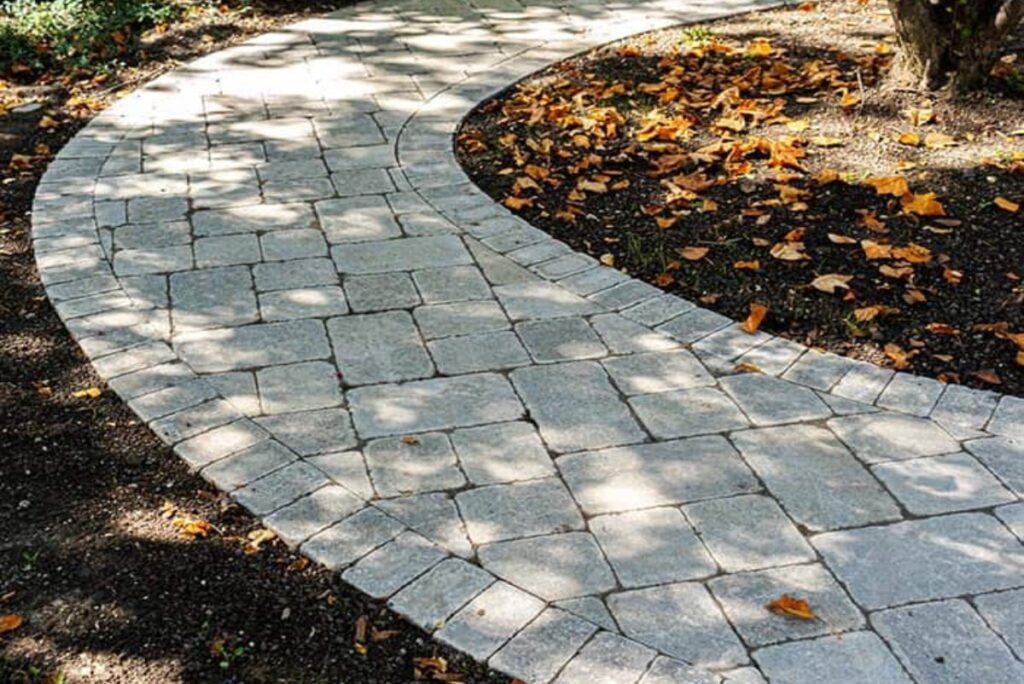

Interlocking Steps
Enjoy aesthetic (non-skid and non-slip) steps with nice decorative aspects with our top-quality interlocking steps service.
Our team focuses on your preferences & requirements when designing and implementing interlocking projects. (We apply only resistant wear-and-tear materials). With highly skilled contractors that use modern techniques and provide a workmanship warranty, you don’t need to worry about your interlocking pavers’ longevity.
Be it steps, walkways, or interlocking driveways, you can trust professionals to deliver the perfect result and the best interlocking by enhancing aesthetics without compromising structural integrity. Choose the options that suit you best.
Pool Interlocking
The pool deck is an excellent feature to improve your outdoor area, where you can enjoy your time with family and friends. The best things about interlocking pools are non-slip surfaces, aesthetic appearance, and little maintenance.
Pool area design may vary based on your preferences. There is a huge variety of choices of interlocking stone type, size, and colour to the general look and custom features to meet your expectations.
The paving stones we use for the pool are durable and don’t require regular maintenance.
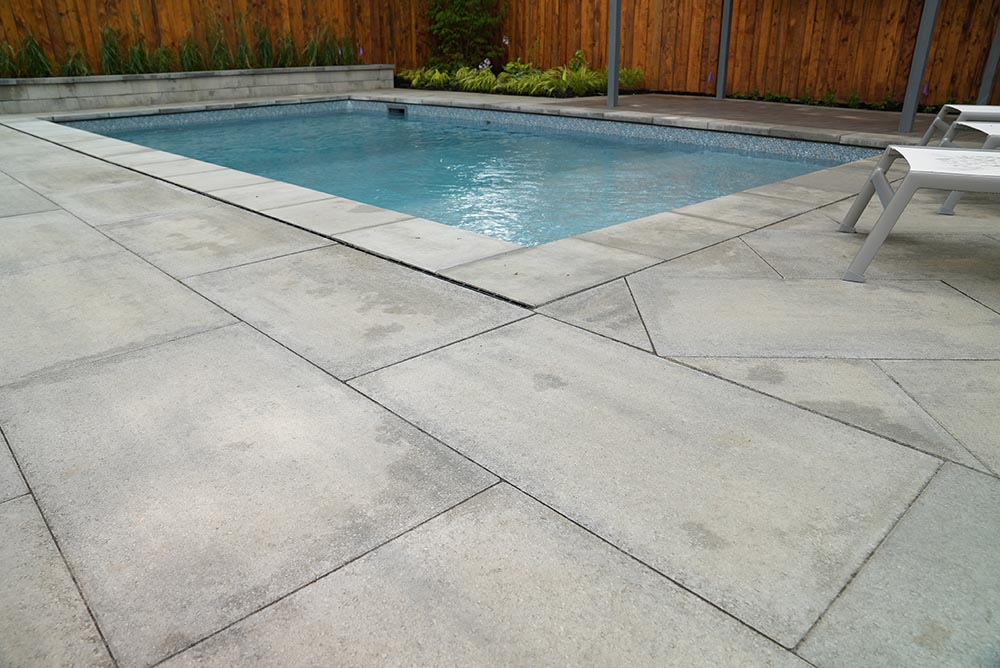
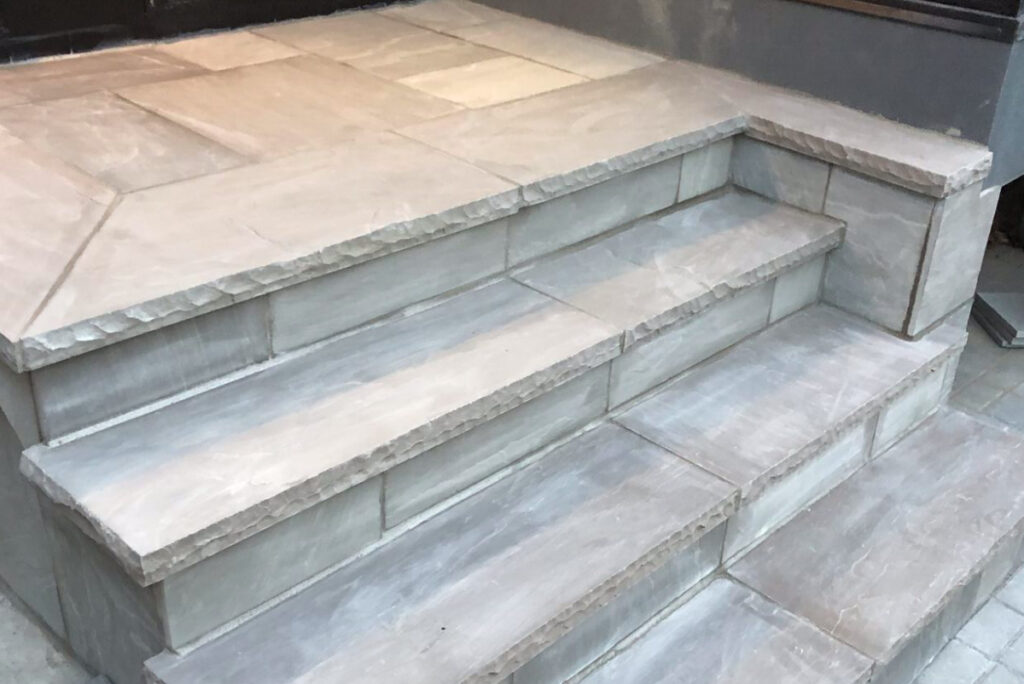
Flagstone
Flagstone is a perfect way to bring something beautiful, natural and luxurious to your space. While most materials for interlocking driveways are made in factories, a flagstone is a natural stone with its charm.
Different shapes and colours of flagstone are available, yet many prefer the combination of random flagstone to get a unique design.
Flagstone can be used in various spaces. Whether you want to design and build driveways, outdoor kitchens, steps, pool areas, or porches, you can choose this stone. Cooperate with an interlock contractor and see how flagstone can improve the overall aesthetics of your property!
Retaining Walls
Retaining walls is a great and functional feature that is necessary to be built to organise space with different elevations. Constructed with natural armour stones or blocks, retaining walls enhance your property, ensuring strength and durability.
The purpose of such walls is to bind different elevation levels. Due to their practical advantages, retaining walls are common in landscape design and interlocking projects in Toronto, constructed to hold the pressure.
When it comes to retaining wall design and build, you can choose between different materials and shapes to make them safe, durable and visually aesthetic.

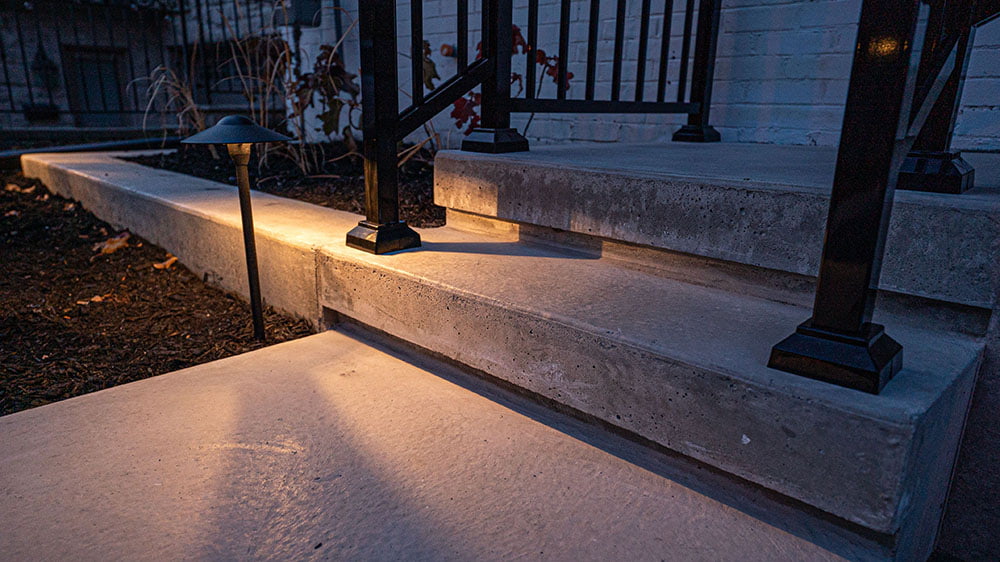
Concrete services
Concrete is among the most versatile materials with a wide variety of finishes. With its ability to be shaped and moulded, concrete is a great option when considering cost-effective, durable, and low-maintenance material. It can withstand harsh weather and temperature gaps, making concrete services among the most demandable for construction projects in Toronto and GTA.
Concrete can be used for driveways and driveway extensions, retaining wall construction, patios, steps, porches, pads, and much more! So, concrete is a good choice if you want to apply a practical yet attractive material.
Interlock Repair
Take advantage of professional interlocking repair services in Toronto and the GTA. Suppose you are facing a problem with your stones or notice that some part of your driveway is sinking, problems with patio, steps, retaining walls, or other parts of your outdoor area. In that case, it’s best to play it safe. Call our interlocking company and we will send you a qualified team with the right equipment and skills to handle the problem.
Our crew can quickly identify the issue, repair the base, replace broken stones or pavers, and prevent the problem from recurring.

Interlocking contractor in Toronto
Choose a dependable interlocking contractor you can rely on when searching for interlocking Toronto services. At GTA Sunrise, we primarily focus on your needs and the property’s features to offer the best driveway, patio, or walkway design option with functional interlocking and improved overall aesthetics of your home’s exterior.
Interlocking stone is one of the best solutions for your outdoor area. Cooperating with our PMs and highly skilled contractors, you can enjoy sound advice and helpful insights to ensure your walkway, steps, retaining walls, and driveway interlocking will be nice-looking and durable.
We offer custom designed projects based on your preferences and requirements and guarantee an agreed-upon budget. Even in case of unforeseen circumstances that may prolong your patio or driveway interlocking, we still adhere to the original timeline for 90% of our projects.
So, if you are looking for a contractor for an interlocking project, our team is here to help you and ensure stress-free installation! We also provide our clients with a wide range of services when it comes to landscaping in Toronto, including customizable options for residential and commercial properties. Contact us and describe your needs to get a free estimate, and we will do our best to interlock the driveway or any other area of your property!
Types of Interlocking Stones
Natural Stone
Natural stone is one of the most expensive yet the best-looking options that can be used for interlocking your walkway, patio or porch. Natural stone’s primary benefit is that it rarely loses its appeal, maintaining its colour and withstanding harsh weather. Also, this material does not require regular cleaning.
It is worth considering that interlocking stones are not suitable for high-traffic areas and it is not recommended to use rock salt on it in the winter.
Interlocking Pavers
Interlocking Pavers are the best option for your driveway, walkway, patio or any other area. Considering the installation technique and harsh Canadian weather our first choice would be interlocking pavers. As well their cost ranges from budget friendly options to enhanced pavers with extra qualities. Another important advantage is the low cost of repair compared to other products. All this makes Interlocking Pavers our top choice for your projects.
Concrete
Concrete is also a popular option. This is an affordable material that has a long service life, is easy to install and versatile in use. Plus, concrete can imitate other materials, giving you space for customization. On the other hand it is the matter of time when it will start to deteriorate or crack in our harsh weather conditions.
Our Before/After project

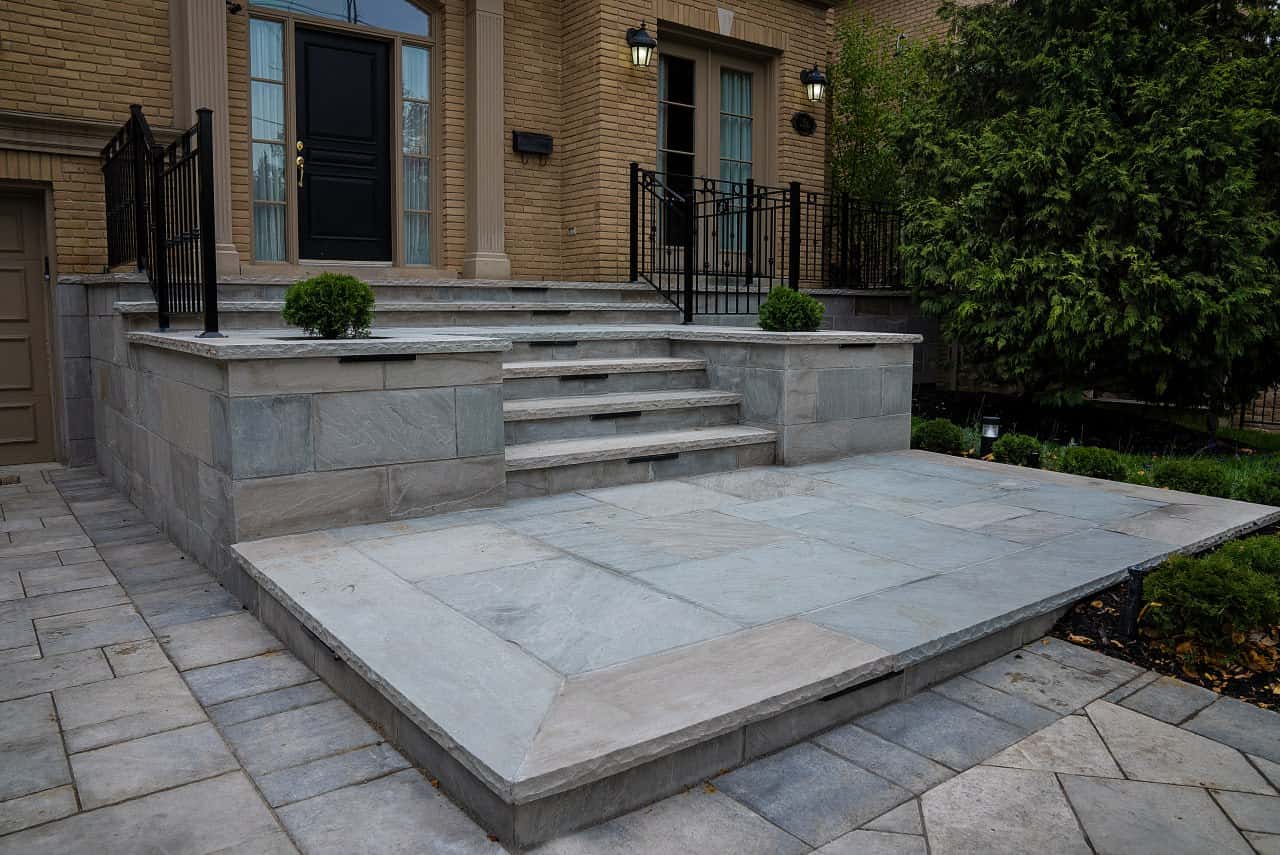


Advantages of Interlocking Installation
The benefits of interlocking Toronto installation include:
- Low maintenance, weather resistance and durability
- Flexible customization, variety of designs and easy installation process
- Improved drainage and non-slip surfaces
- The sustainable and environmentally friendly solution
- Low cost of repairs
- Adds a lot of value to your property
Take advantage of the best interlocking and landscaping services from qualified interlocking contractors you can trust. Reach us today and bring your ideas and backyard dreams to reality!
Transform your Outdoor Space with the help of the experts from GTA Sunrise!
Why choose GTA Sunrise?
Trust
Through quality workmanship, insurance, and warranties, we do our best to be a highly recommended landscaping company you can trust.
Experience
Our team of designers and builders, who are dedicated specialists with extensive knowledge and background in the landscape construction industry.
Reputation
Being a Unilock Authorized Contractor, our commitment to excellence and good reputation with our clients means a lot to us.
Professionalism
With experience in residential and commercial construction, we have gained the necessary skills to become true professionals.
Quality
The high quality of completed projects and customer satisfaction are the key priorities in business for our landscape construction company.
Support
We are always here for you to answer all your questions and offer you excellent customer support service.
Testimonials
Areas We Serve
- Mississauga
- Richmond Hill
- Markham
- Brampton
- Oakville
- Newmarket
- Vaughan
- Etobicoke
- Whitby
- Aurora
- Woodbridge
- Maple
- Pickering
- Toronto
- Thornhill
- North York
- Scarborough
- King City
- Uxbridge
- Whitchurch-Stouffville





